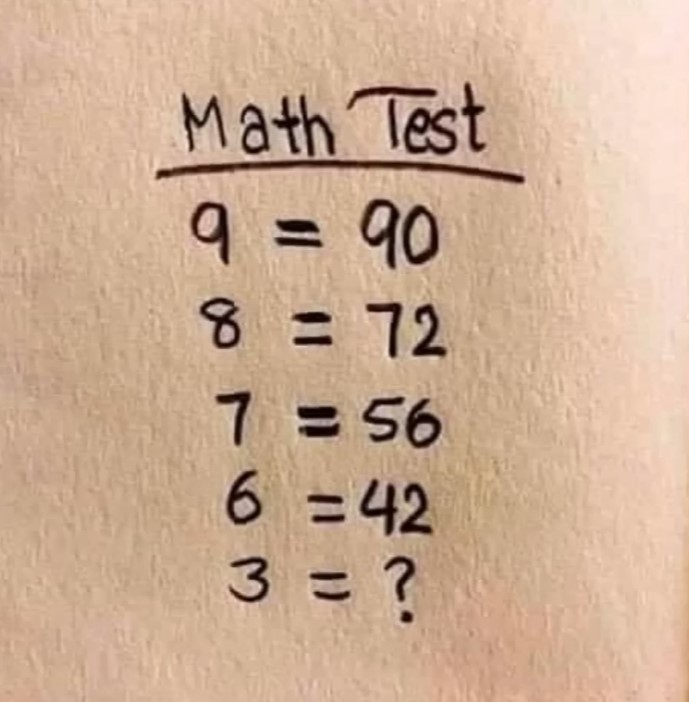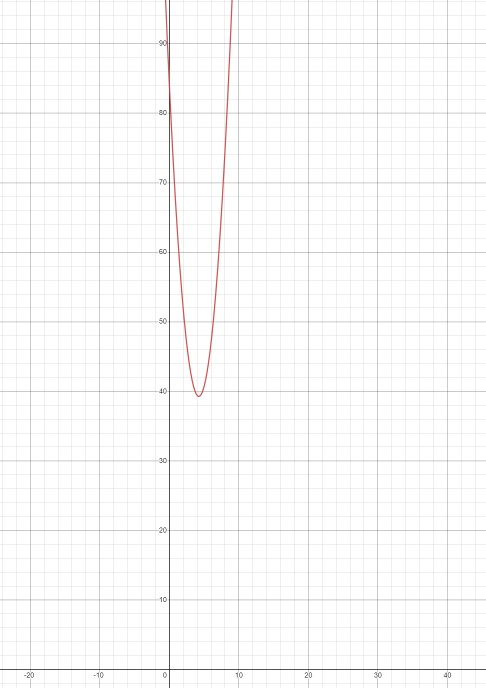Hank Green of Vlogbrothers, Crash Course, podcasting and novels fame, posted a video working through his complaint about the following maths problem.
It will take about four minutes for you to run through the video; so please take the time to do that before I move on.
https://www.youtube.com/watch?v=lBJVyCYuu78
The big takeaway from this video is that a maths problem like this, which is deliberately vague, is designed like so much else on the internet, to be an outrage generator which then gets people arguing and thus drives clicks and advert revenues. I have no problem with this as a summary for what is going on in the maths problem.
Even if we set that aside though and even if we ignore the fact that 9 does not equal 90, 8 does not equal 72, and 8 does not equal 56 et cetera, there's still yet another fundamental thing about this which Hank did not discuss. Let me rewrite this problem so that it makes better sense and is parsed better.
Given the points:
(9,90), (8,72), (7,56) (6,42), what should the y value be for the x value of 3.
Most people answer:
3 = 12 or,
3 = 18
This is a better written maths question and it nominally appears to be solvable. The solution of y=x(x+1) is a good fit for these points and the answer of (3,12) looks to be about right but is it the only answer? No. Here in fact is the fundamental problem with the question and why people like to answer the question so vociferously.
When you see the notation in maths of y=f(x), then this means that y is the result of doing something, that is performing some function on x. A function in maths is kind of like a set of instructions to get you from one place to another. The problem is that with such a small set of points, the function is actually unknowable. Granted that if we already know what the function is, then we can produce an infinite amount of answers according to the rules of the function but in this maths problem we are not given the function. We have a guess. We can make a good localised guess but it is still a guess.
By only giving us a a few points, we run hard up against one of the most annoying general rules in maths; which is:
Any given set of points can be solved with f(x) such that there is at least one polynomial, linear or transcendental equation.
The statement that:
3 = ?
Is true because, yes, it does.
3 = ?
We can make a good guess about the existing points; however 'good' is not exhaustively true. This unknown point of 3 = ? might very well be extrapolated to simple answers but what if it is not?
y=x(x+1) will give you a parabolic shape but what if the points lie on some other curve, like a really big oval, or a strange multi-additional scribble, or some exponential function? Then what? Four points of order on an infinitely big plane, is not really all that helpful.
Consider the following:
1, 6, 28. What comes next? The answer isn't even intuitive¹.
30, 34, 38. What comes next? If you said 42, then you would be wrong. What comes next in this series is 50².
I'm not going to tell you what the functions actually are and I will leave that for you to find out but it illustrates the point.
Even after setting aside that 9 does not equal 90, 8 does not equal 72, and 8 does not equal 56, it is actually impossible to know what 3 is paired with in this sequence without knowing what the function is.
Since I am a maniacal mathematical monster who is currently in charge of the numbers then I get to decide whatever answer I jolly well like. Muah ha ha ha!³
I will answer...
3 = 42
Why? Because I know that there will be at least some function will will make that true. I have no idea what that function actually is but I am confident that it must exists because ANY given set of points can be solved with f(x) such that there is at least one polynomial, linear or transcendental equation.
Why else? Because I am feeling in a parabola mood today and I am good at solving for functions with parabolas.
If 42 is my answer, then f(x) is sort of: y = 2.49137x² - 21.6531x + 84.2229
It looks like this:
"Oh ho ho" you might say, and point at me while you accuse me of cheating. At the same time, in arriving at your answer of 12, you must have decided that the function was something else and then solved for that function. It is a mark of insincerity of purpose to seek a high-born emperor in a low down tea shop. You can not make an appeal to authority and ignore the fundamental flaw in the question while someone else has exploited the fundamental flaw in the question and has made an appeal to authority.
This takes me back to a quip which I once read on a poster in a classroom oh so many years ago. "Not knowing the question, it was easy to give an answer." What makes this even more fun is that when you have something that looks a bit mathsy, suddenly you get people making appeals to authority everywhere; without actually arriving at the fundamental flaw in the question.
¹ The next number is 496 - these are the perfect numbers.
² 50 is the next number in the series because these are actually FIFA World Cup dates and there was no World Cup in 42 or 46 because a war got in the way.
³Count Von Count as a vampire can easily be distracted by throwing a handful of rice on the ground because one of the things about vampire legend is that they actually do have arithmomania and will be compelled



No comments:
Post a Comment